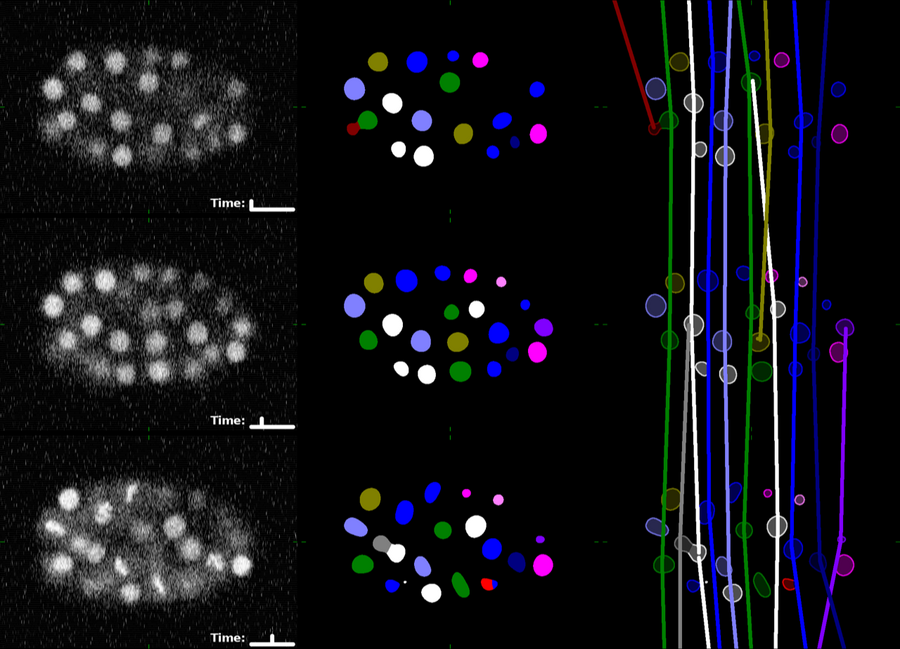
Segmentation and tracking of cell nuclei in time-lapse images
Tracking moving cells in time-lapse videos is a challenging task. By studying the movement of cells and the interaction with their environment, we can gain insight into how cells function when they are either healthy or diseased. An international team of scientists from Spain (Pamplona and Madrid), the Netherlands (Rotterdam), the Czech Republic (Brno), and Germany (Dresden) initiated a series of Cell Tracking Challenges in 2013, 2014 and 2015 in order to compare and evaluate state-of-the-art tracking methods of the whole cell and the nucleus. The team used 2D and 3D time-lapse microscopy videos, alongside computer generated video sequences simulating nuclei during interphase and mitosis.
Now, the scientists present a combined report on the results of the past three editions of the Cell Tracking Challenge in the current issue of Nature Methods. Pavel Tomancak and Florian Jug, research group leaders at the MPI-CBG, contributed to the organization and analysis of the challenge results. The report analyses 52 videos of the challenge in which 21 groups from 18 countries have participated. Specifically, the researchers have found that algorithms that take prior information into account using learning strategies or analyse multiple images together work best.
Vladimír Ulman, researcher in the group of Pavel Tomancak and lead author of the report, says: “We are currently preparing new videos for the challenge. There is a lack of good tracking solutions for embryonic development, since it typically displays high cell densities in large images. We believe that by offering such testing data to the computer science community, we should eventually see good tracking solutions also for this type of data.“
The challenge is now open for continuous submission of new solutions online.
Vladimír Ulman et.al.: An objective comparison of cell-tracking algorithms Nature Methods, 30 October 2017